|
|
Unique
amongst religious schools of thought is the one proclaimed by Zarathushtra
Spitaman in emphasizing the need to take care of earth’s ecology, to
cultivate the earth and to protect the environment. Ancient Iran, despite
the arid climate of central Iran was a land fully cultivated, and where
one village ended, another one started.[i]
Poised
against the majestic background of the Hezar mountain range -photo- in
the Kerman province of Iran,
and distinct for the natural charm of its
surrounding and its diverse
agricultural produce,
one old village stands as a lasting legacy
of a great King and the humanistic
cultural heritage that gave raise to the
rulers of Ancient Iran.
The
village, known for the longest time by its Arabic name
'Gharyat-ul-Arab' -
in Persian Deh Tazian - literally "The
Village of the Arabs", and recently (1982)
renamed
as Gulzar - flower field - stands as a lasting legacy of the great
Sassanian king, Khosrow 1st, also known as
Khosrow the Just, who ruled some 15
centuries ago.
It is
believed that Khosrow 1st, intent on getting the Arab tribes to take
interest in Agriculture and to become
self-sufficient and more dependent on the
land for their subsistence rather than
warfare, moved the members of one such
tribe from their domicile on the
South-western boundary of the Sassanian empire
to this village on the Eastern side. The
idea might have been that after
acquiring agricultural skills, the
migrants would go back and apply their newly
acquired know-how towards development of
their own homeland. Whatever the
original intent might have been, the
migrants stayed on and assimilated the
Persian culture surrounding them and never
went back. However, ever since they
have been drawing their livelihood from
the land, and by so doing they bear
witness to the legacy of the Just King and
his cultural norms. The inhabitants of the village who have adapted the
last name of Saeed are believed to be descendents of the Persian
officials who were stationed in the village by King Khosrow’s
administration, and were referred to as Sepahis.
The current
mosque in the village is believed to have been built on the site of the
old Zoroastrian fire temple that used to serve the village. This forced
conversion stands a legacy of the destruction and intolerance that marked
the Arab invasion of Iran a century and half after the arrival of the
first Arab inhabitants of Gharyat-ul-Arab.
[i]
Nurturing Mother Earth – A Zoroastrian Preoccupation
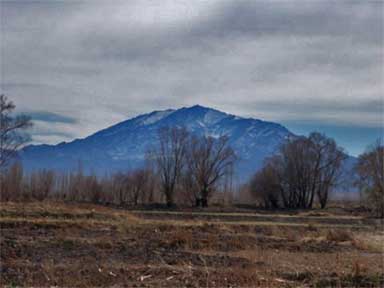 |
|
The snow capped Hezar Range mountain
viewed from the outskirt of the village in late fall 2003. |
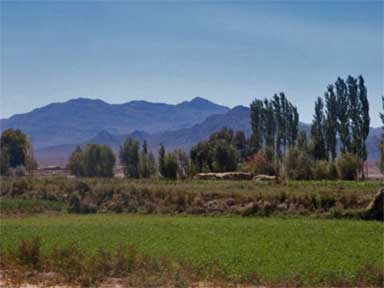 |
|
A view of the field where beet crop
is grown by villager farmers. |
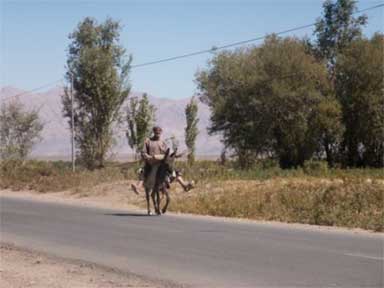 |
|
Some of the older village farmers
still use donkeys for transportation. Many have started using
motorcycles and cars. |
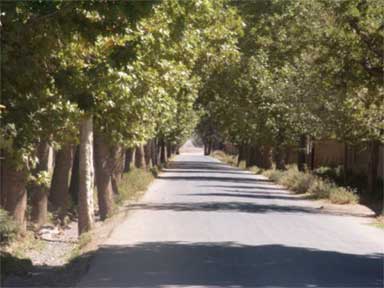 |
|
View of one of the main streets of
the village. |
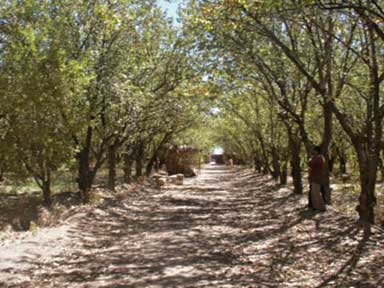 |
|
Lush apple orchards to be found in
the village is a dependable source of that crop for the
citizenry of Kerman city. |
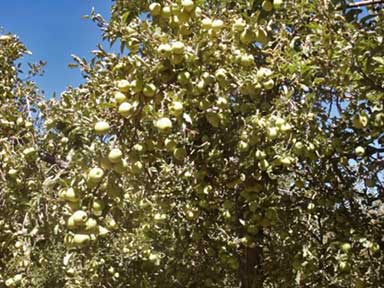 |
|
Apple orchards produce abundance of
fruit for local consumption. |
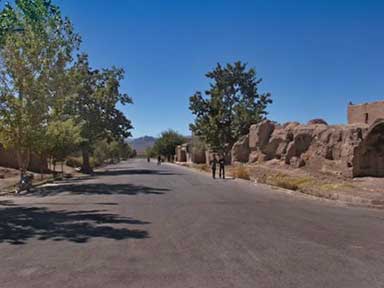 |
|
Village youngsters returning from
school. |
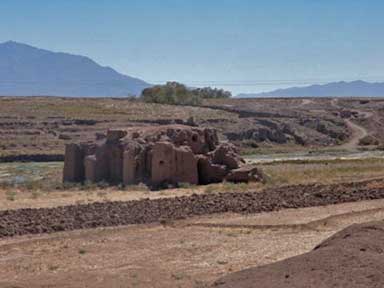 |
|
Ruins of an old resting areas
"Caravanserai" outside the village coming from the direction of
Kerman. |
|